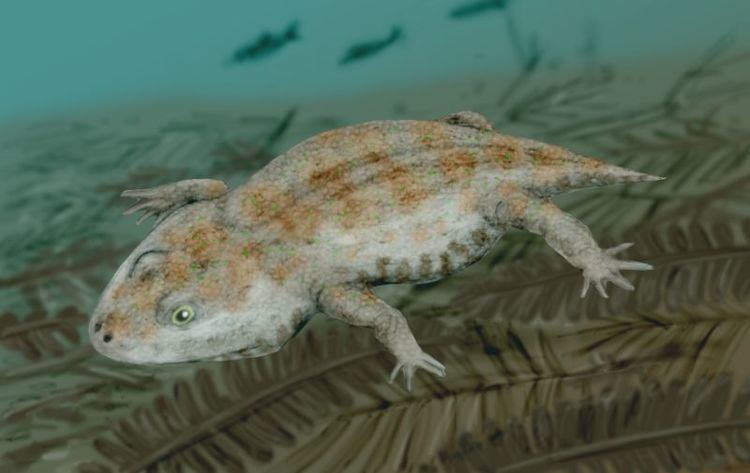Scientific name Amphibamidae Higher classification Dissorophoidea | Superfamily †Dissorophoidea Phylum Chordata Rank Family | |
 | ||
Similar Dissorophoidea, Temnospondyli, Dissorophidae, Micropholis, Amphibians | ||
The Amphibamidae are an extinct family of dissorophoid euskelian temnospondyls. The earliest amphibamids, such as Amphibamus, are known from Late Carboniferous strata in the United States and the Czech Republic, while the last known amphibamid, Micropholis, is known from the Early Triassic Karoo Basin of South Africa. According to some phylogenetic studies, modern amphibians, including frogs, salamanders, and caecilians, may have descended from a common ancestor that was an amphibamid.
Contents
Classification
Cladogram from Schoch and Rubidge (2005):
Cladogram from Huttenlocker et al. (2007):
Cladogram from Fröbisch and Reisz (2008):
Cladogram from Schoch (2009):
Relationship to the Batrachia
The Amphibamidae contain the genus Gerobatrachus, which has been interpreted as the sister taxon of the Batrachia, the modern amphibians. Below is a modified cladogram from Anderson et al. (2008) showing Batrachia nested in the Amphibamidae, with Gerobatrachus as the sister taxon of Batrachia:
The cladistic analysis of Anderson et al. (2008) supported the "polyphyly hypothesis" of modern amphibian ancestry, whereby some extant amphibian groups are descendants of temnospondyls, while others are descendants of lepospondyls, another large group of Paleozoic amphibians. Caecilians were nested within the Lepospondyli, making the Lissamphibia polyphyletic.
